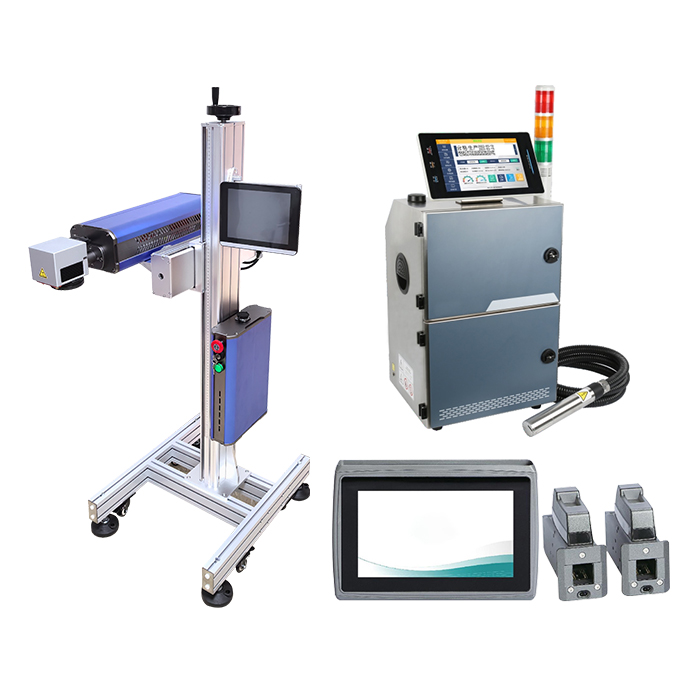
Professional industrial coding and marking machines manufacturer
When choosing between different industrial coding and marking solutions, there are several factors to consider. Here are some key points to help you make an informed decision:
1. Printing Requirements: Assess your specific printing requirements. Consider the type of information you need to print, such as date codes, batch numbers, logos, or barcodes. Determine the materials you will be printing on, whether they are flat or curved, and their surface characteristics (porous, non-porous, rough, smooth, etc.). CIJ printers are widely used to print on flat and curved surfaces, while TIJ printers are mostly used to print onto flat surfaces. Both of the printers can be used inline to provide coding and marking services.
2. Printing Technology: Understand the different printing technologies available, such as continuous inkjet (CIJ), laser coding, thermal inkjet (TIJ), and print-and-apply labeling systems. Each technology has its advantages and is suitable for specific applications. Consider factors such as print speed, print quality, substrate compatibility, and cost of consumables. CIJ printers are versatile and can be used across industries, yet they require ink and solvent, and TIJ printers need cartridge replacement, which all add extra costs. Laser marking machines require no consumables and they are now becoming more affordable with the technological advancement.
3. Substrate Compatibility: Ensure that the coding and marking solution you choose is compatible with the materials you will be printing on. Some solutions may work better with certain substrates, such as plastics, metals, paper, or glass. Verify that the solution can achieve high-quality and durable printing results on your intended materials. Fiber laser coders are widely adopted to code onto metallic products and CO2 lasers are capable of printing on non-metallic products. UV laser markers can be used to print on some fine electronics such as PCBs, silicone wafers.
4. Integration and Automation: Evaluate whether the solution can be easily integrated into your existing production line or machinery. Consider compatibility with your equipment and whether the solution supports automation, on-the-fly coding, or integration with other systems.
5. Maintenance and Consumables: Assess the maintenance requirements and the cost of consumables, such as inks, fluids, or laser sources. Consider the frequency of maintenance tasks, availability of spare parts, and the overall cost of ownership over time. All our printers are user friendly and easy to maintain.
6. Regulatory Compliance: Ensure that the chosen solution meets the necessary regulatory requirements for your industry. Consider factors such as product traceability, compliance with coding standards, and any specific regulations related to your products or markets. Laser markers offer permanent markings on products, resistant to wear and tear. When permanent marking is required, laser marking machine is an ideal choice.
7. Cost Analysis: Evaluate the total cost of ownership, including upfront costs, ongoing maintenance expenses, and consumable costs. Consider the potential return on investment (ROI) based on increased efficiency, reduced downtime, improved quality, or compliance benefits.
By carefully assessing these factors and understanding your specific requirements, you can make a well-informed decision when choosing the most suitable industrial coding and marking solution for your business. Additionally, consulting with experts or solution providers in the field can provide valuable insights and guidance during the selection process.
Shenzhen TP-Mark Technology Co.,Ltd is a supplier with more than 10 years’ industrial coding and marking application experience, welcome to contact us with your specific needs. We offer free consultancy and free sample marking, to help you identify the right industrial coding and marking solution for your products.
